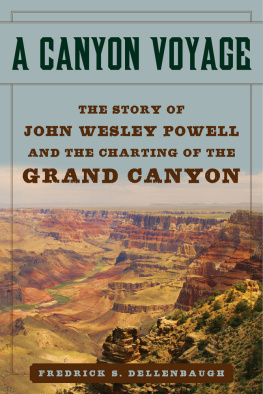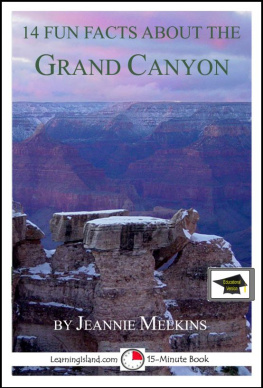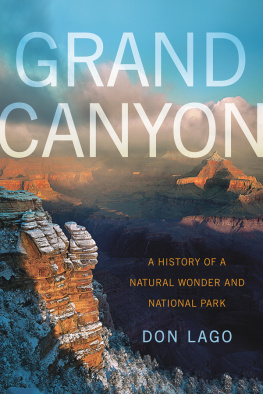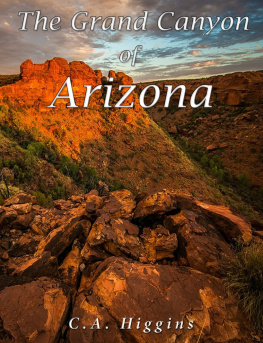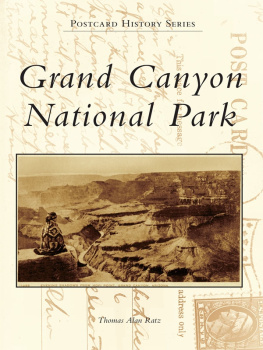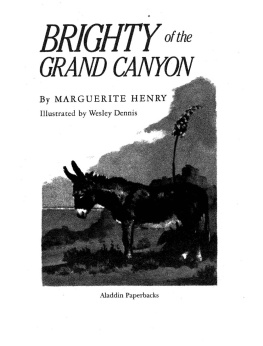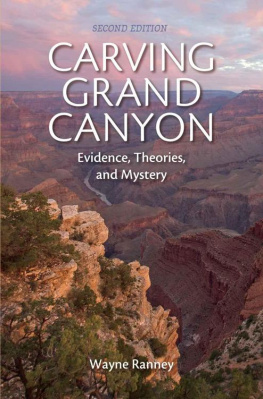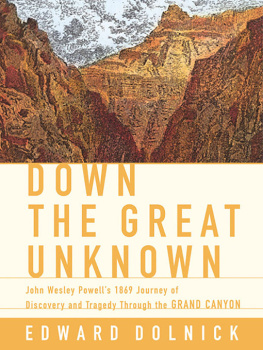
SIMPSON
IMPRINT IN HUMANITIES
The humanities endowment
by Sharon Hanley Simpson and
Barclay Simpson honors
MURIEL CARTER HANLEY
whose intellect and sensitivity
have enriched the many lives
that she has touched.
The publisher gratefully acknowledges the generous support of
the Simpson Humanities Endowment Fund of the University of
California Press Foundation, which was established by
a major gift from Barclay and Sharon Simpson.
The publisher and author gratefully acknowledge
the generous contributions to this book provided by
Westminster College and Moki Mac River Expeditions.
THE GRAND CANYON READER
THE GRAND CANYON READER
EDITED BY LANCE NEWMAN


Frontispiece: Panorama from Point Sublime, by William Henry Holmes. Reproduced by permission of the David Rumsey Map Collection, www.davidrumsey.com .
University of California Press, one of the most distinguished university presses in the United States, enriches lives around the world by advancing scholarship in the humanities, social sciences, and natural sciences. Its activities are supported by the UC Press Foundation and by philanthropic contributions from individuals and institutions. For more information, visit www.ucpress.edu .
University of California Press
Berkeley and Los Angeles, California
University of California Press, Ltd.
London, England
2011 by The Regents of the University of California
Library of Congress Cataloging-in-Publication Data
The Grand Canyon reader / edited by Lance Newman.
p. cm.
Includes bibliographical references.
ISBN 978-0-520-27078-7 (cloth : alk. paper) ISBN 978-0-520-27079-4 (pbk. : alk. paper)
1. Grand Canyon (Ariz.)Description and travel. 2. Colorado River (Colo.-Mexico)Description and travel. 3. Natural historyArizonaGrand Canyon. 4. Natural historyColorado River (Colo.-Mexico) 5. Grand Canyon (Ariz.)Literary collections. 6. Colorado River (Colo.-Mexico)Literary collections. I. Newman, Lance.
F788.G7555 2011
979.132dc22 2011009200
Manufactured in the United States of America
20 19 18 17 16 15 14 13 12 11
10 9 8 7 6 5 4 3 2 1
This book is printed on Cascades Enviro 100, a 100% post consumer waste, recycled, de-inked fiber. FSC recycled certified and processed chlorine free. It is acid free, Ecologo certified, and manufactured by BioGas energy.
To the river guides of Grand Canyon
The book is open, and I can read as I run.
JOHN WESLEY POWELL
CONTENTS
Amil Quayle
Craig Childs
Ann Zwinger
Edward Abbey
Colin Fletcher
Joseph Wood Krutch
Theodore Roosevelt
John Muir
Harriet Monroe
Sharlot Hall
Patricia McCairen
Terry Tempest Williams
Barry Lopez
John McPhee
Bill Beer
Bert Loper
George Flavell
John Wesley Powell
Michael Kabotie
Linda Hogan
Wallace Stegner
Joseph C. Ives
Francisco Garcs
Pedro de Castaeda
G. M. Mullett
Hualapai
Ramson Lomatewama
ACKNOWLEDGMENTS
The author would like to thank Richard Quartaroli of the Cline Library at Northern Arizona University, Roy Webb of the Marriott Library at the University of Utah, Paul Hirt of the Department of History at Arizona State University, Betty Upchurch of the Research Library at Grand Canyon National Park, and Brad Dimock of Fretwater Press for invaluable assistance in identifying and locating materials. Thanks also to Kim Robinson, Jacqueline Volin, and Bonita Hurd of the University of California Press, who did remarkably careful and thoughtful work at all stages of the editing process. Finally, this book would not have been possible without the generous support of the Quist family, Hal and Barbara Newman, David and Vicki Mackay, Fred Phillips, Dwight Worden, Latimer Smith, and Matt Herrman.
INTRODUCTION
Stories of the Great Unknown
John Wesley Powell, leader of the first recorded river expedition though Grand Canyon, looked downstream from a beach near the mouth of the Little Colorado River on August 13, 1869. For more than two and a half months, he and his crew had been working their way down the Colorado from their starting point in Green River, Wyoming, carrying their heavy boats and equipment around most of the rapids. They were exhausted, battered, and hungry. They hoped to reach the mouth of the Virgin River where it enters the lower Colorado, but maps of the region showed only terra incognita, a blank space that they would need to cross to get to safety. Wondering what might wait around the bend where the canyon turned sharply to the west, Powell wrote in his journal, We are now ready to start on our way down the Great Unknown.
Today, when we first look out from the rim, Grand Canyon can still seem not only unknown but even unknowable. As we struggle to comprehend the view, we often start by trying to compute the canyons size. It is as much as six thousand feet deep and eighteen miles wide. The Colorado River flows 277 miles from Lees Ferry to Pierce Ferry at an average rate of 17,850 cubic feet per second. There are more than 75 named rapids, with a total combined drop of more than two thousand feet. The rocks in the canyons walls range from about 270 million years old to about 1.8 billion years old, or about two-fifths the age of the planet. Numbers like these offer a rudimentary sense of scale, but in the end they are just numbers. So next we try to comprehend the canyon by comparing it to more familiar things. The area between the rims is twice the size of Massachusetts. Four Empire State Buildings stacked one atop the other would not reach the rim. All of the billions of human beings alive today could be packed into the inner gorge, and they would not be visible from the rim. In the end, though, even startling images like these fail to take the measure of the canyon.
There is one tool that makes this unintelligible space into a meaningful place: the story. Stories fill the Great Unknown with human action, thought, and desire. Stories transform this immense emptiness into the place that visitors come to see: Grand Canyon. In the tradition of the Hopi tribe, the canyon is Ongtupka, the place of salt, where human beings emerged into this, the fourth world. In previous worlds, the people had strayed from the ways of peace, so the creator gave them a beautiful but challenging new home where the sheer difficulty of survival would help hold their community together. For John Wesley Powell, the canyon was the open Book of Nature, and he dedicated his life to reading its record of earths geologic history. Powell saw himself as an explorer and scientist working in the service of human progress. His account of his exploration of the canyon inspires readers with a story of the triumph of reason and science over fear and ignorance. For Ann Zwinger, the story of a hike to an ancestral Puebloan grave site offers an opportunity to think about modern societys relationship with nature. Contemplating the fate of a woman buried near the mouth of Bright Angel Creek almost a thousand years ago, Zwinger wonders whether we, too, will find the limits of our ability to thrive in such a challenging and fragile land.
Next page

